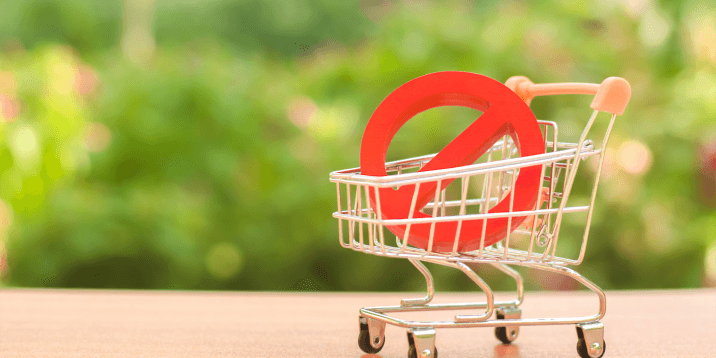Blogs to Go
Prohibited Seller Activities
June 6, 2022 Posted by LAURA WILSON

Malicious Users; People who refuse to play by the rules
- ‘Black Hat’ techniques are employed by those who break the rules with techniques/hacks knowingly such as leaving negatives reviews for their competitor’s products
- ‘Gray Hat’ techniques are those techniques that exploit ambiguities
-
Take your business seriously and recognize:
- Cheats/manipulations have only a beneficial short half-life
- Short-term thinkers build their enterprise around such short-sightedness
- You are influenced by the company you keep; avoid such charlatans
Ignorance of the rules is no excuse and won’t spare you from suspension. Suspensions based on rule infractions can last from days to months to even forever. Here’s what you need to know to steer clear of such problems with Amazon’s Terms of Service (ToS)
What do when you get a suspension
- Contact Amazon and be sure to take responsibility EVEN if it’s clear that it is the customer’s fault
- Fill out a form outlining how you’ll remedy the issue so it won’t occur again. This generally results in your listing being reinstated automatically
-
Severe violations necessitate a Plan of Action (POA). It must be:
- Straightforward and to the point
- Takes responsibility
- May require getting Amazon to divulge specifics as to why you have been suspended
- For peace of mind and certainty, enlist a specialist to get you out of hot water
Causes for Suspension
Directing people away from Amazon.com
- Outbound links/URLs such as to your website in your listing
- Anything such as in your listing such as the description, title or images that can lead away from Amazon is a no-no
- Follow-up emails or other buyers/seller communications that contain Outbound links/URLs
- Only link directly back to Amazon
Never Incentivize Reviews
- In the good ol’ days, you could offer freebies for a favorable review. Those days are long gone.
- If caught, you will be rewarded with a suspension. Amazon is strict about this policy
- Request honest reviews and do not speak of 5-star reviews; Use neutral language
- Don’t encourage customers to leave a review if they are happy and contact you if they are not. Amazon considers this misleading
- Posting links for positive reviews and then a link to seller feedback for negative reviews is also a no-no in Amazon’s eyes.
- DO: ‘ Hello, please share your experience by leaving a product review here ’
- DON’T: ‘Hello, if you were satisfied with your product, please leave us a five-star review here’
- Amazon can figure out if you are having friends and family give you reviews
- Even if they buy the product, don’t have them leave a review
- No freebies or discounts or gift cards for reviews
- Amazon uses its Amazon Vine Program to incentivize reviews
- New sellers get up to 30 reviews for their new product launch
- Give away 30 units of your product
- Amazon vets trusted reviewers to give honest feedback
- Builds momentum at the beginning of your product launch
Never Attack your Competition
- Leaving negative product reviews for competitors wins you a suspension
- Upvoting negative product reviews for competitors wins you a suspension
- If this sort of sabotage happens to you, report it to Amazon for assistance.
Ranking Manipulation
- NO fake buys or adding to carts
- NO fake orders
- NO buying your own products and leaving reviews
- When new accounts have an extraordinary amount of sales right off the bat, such as 100,000, Amazon may investigate and temporarily freeze your funds
Prohibited Products
- Avoid products that Amazon prohibits
- Be aware of products containing hazardous materials as they may be prohibited
- Be careful with products that may be legal in some areas but illegal in others
Ready to see all your metrics and profit in one easy place?
Stop wasting time on spreadsheets and start using what the professionals use.
Customer Abuse in Communication
- Contact outside of the buyer-selling message is prohibited
- One follow-up email to customers is allowed
- Communicate with customers through the messaging system or tools that use the messaging system
- Avoiding bombarding previous customers with promotions
- Follow-up and customer service messaging is permitted
- Target subsets such as those customers who have purchased a specific product with follow-up messaging, especially if instruction or other product-related messages are involved
Multiple Seller Accounts without Permission
-
Multiple accounts are permitted under these guidelines:
- Different accounts for different brands
- Different partnerships
- Separate accounts equal separate business, thus separate bank accounts
- Using a different bank for each account, with its own EIN, business address and so on is recommended
- You will be BANNED for saying the same products across different accounts
Variation listings (parent/child SKUs ) manipulation
- Do not use multiple unrelated products as variation listings (child SKUs) to raise rankings
- Do not use the same product with multiple child listings
- You may have both FBA and FBM listings of the same product but they must be variations of each other under the same parent listing
- Do not list the same product with different ASINs
No Trademarked names (that aren’t your) in listings
- You may not say ‘Brand X phone case ‘ but you can say ‘phone case compatible with Brand X’
- Do not use brand names in your listing, your backend or keywords
- Never copy another seller’s images or listing
Main photo guidelines
- White background
- No graphics or promotional text
No unsubstantiated claims
- Health claims, certification claims, and the like that are untrue with result in a suspension
-
For example:
- Lose 5lbs in 5 days
- NBA certified
- Licensed by WHO

